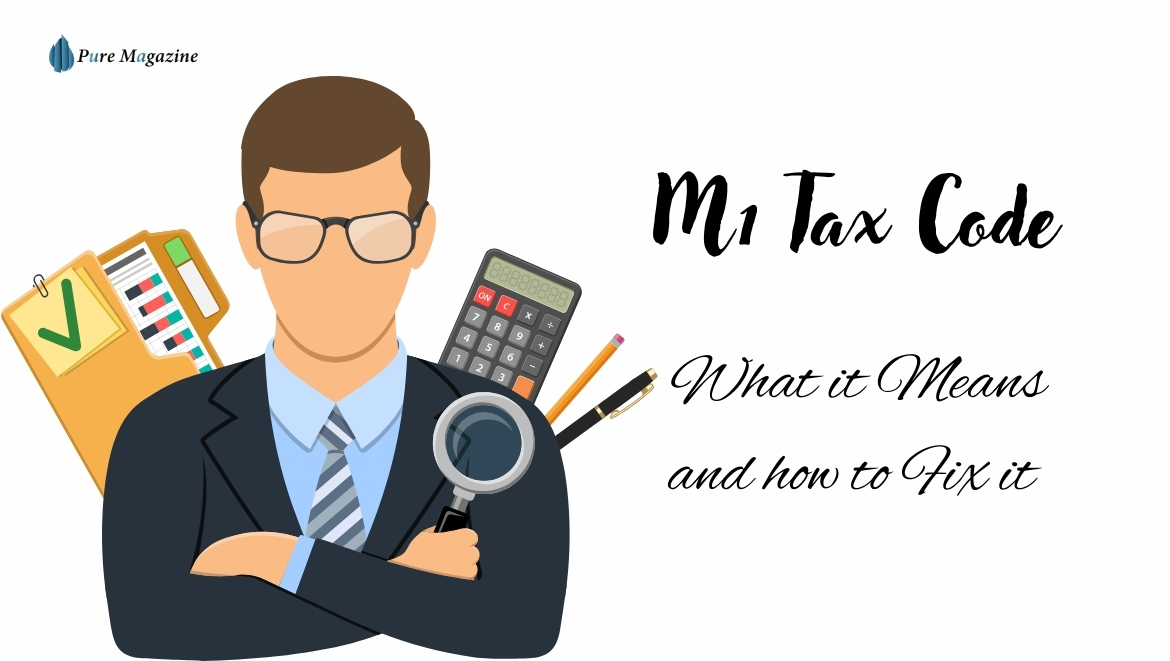If you’ve just started a new job, switched employers, or noticed a strange code on your payslip, you might have seen something like 1257L M1 or 0T M1. It looks confusing—and sometimes it even means you’re paying more tax than expected.
This is what’s known as the M1 tax code, often called a Month 1 emergency tax code. It’s HMRC’s way of collecting tax when they don’t yet have your full income details. The good news? It’s usually temporary.
Let’s break down what the M1 tax code means, how it affects your take-home pay, and what you can do if it shows up on your payslip.
What Does the M1 Tax Code Mean?
The M1 code stands for Month 1. When HMRC applies it, they treat every payslip as if it’s the first month of the tax year—ignoring what you earned earlier in the year.
- A normal tax code is cumulative. That means your personal allowance (£12,570 for 2025/26) is spread across the year, and your tax is balanced as you go.
- An M1 tax code is non-cumulative. HMRC only looks at your earnings for that month, without considering previous income or unused allowance.
In practice, this often means you’ll pay more tax than you should for a short time—until the code is corrected.
Common Versions of the M1 Tax Code
You might see different letters and numbers alongside M1. Here’s what they mean:
- 1257L M1 → You’re entitled to the standard personal allowance, but it’s only applied for that month.
- 0T M1 / OT M1 → No personal allowance is applied. All income is taxed from the first pound.
- BR M1 → Basic Rate only (20%), no personal allowance.
Why Would Someone Be Put on an M1 Tax Code?
HMRC uses the M1 code in a range of situations where they need to estimate your tax temporarily:
- Starting a new job without providing a P45.
- Changing jobs partway through the tax year.
- Employer is missing income details from your starter checklist.
- Receiving both a state pension and employment income.
- Business owners or company directors drawing irregular PAYE salaries.
In most cases, it’s not a mistake—it’s HMRC’s way of making sure you don’t underpay tax while they gather the right information.
How the M1 Code Affects Take-Home Pay
The main impact is on your take-home pay. Because the allowance is not cumulative, you may pay more tax upfront.
Example:
- Under a normal cumulative 1257L code, if you earn £2,000 in one month, you get part of your personal allowance spread across it.
- Under 1257L M1, HMRC ignores any unused allowance from earlier months, so you lose out temporarily.
This doesn’t mean your money is gone forever. If you’ve overpaid, HMRC will refund you once your tax code is corrected.
M1 Tax Code vs Emergency Tax Codes
The M1 tax code is one type of emergency tax code. Emergency tax codes are used when HMRC doesn’t have enough details about your income history.
- Emergency codes usually include 1257L M1, 0T M1, or BR M1.
- They’re not permanent, and once HMRC has your correct information, your code should switch back to a normal cumulative one.
How to Fix an M1 Tax Code
If you see M1 on your payslip, here’s what to do:
- Check your payslip – confirm if it shows 1257L M1, OT M1, or another variation.
- Log in to your Personal Tax Account (gov.uk) – see what code HMRC has for you.
- Give your employer your P45 – or complete the new starter checklist.
- Contact HMRC – call 0300 200 3300 if you think your tax code is wrong.
- Wait for updates – corrections often happen within the same tax year. If you’ve overpaid, HMRC will issue a tax refund
Special Situations to Know
For a wider breakdown of tax codes and their meanings, you can check this list of tax codes and what they mean (HMRC).
- State pension: Sometimes triggers an M1 code if HMRC needs to balance pension and PAYE income.
- Multiple jobs: Each employer may apply different codes, which can lead to temporary M1 codes.
- Self-employed with PAYE work: If you do both, M1 may be used until HMRC balances your records.
- Company directors: Irregular salary or dividends can cause temporary codes.
FAQs
Q. What does M1 mean on a tax code?
M1 means Month 1 basis, where HMRC calculates tax as if it’s the first month of the tax year. It’s usually applied as a temporary emergency tax code.
Q. What is the 1257L M1 tax code?
The 1257L M1 tax code gives you the standard tax-free personal allowance (£12,570 in 2025/26), but only for that single month instead of spreading it across the year.
Q. Is the M1 tax code bad?
Not bad, but it can reduce your take-home pay temporarily. You might pay more tax upfront, but HMRC refunds any overpaid tax once your code is corrected.
Q. Why am I on an M1 tax code?
Common reasons include: starting a new job without a P45, your employer not having full income details, or receiving both a pension and a salary.
Q. Will I get a refund from an M1 tax code?
Yes. If you’ve overpaid, HMRC will refund you through your payslip adjustments or at the end of the tax year.
Final Thoughts
The M1 tax code can look worrying on a payslip, especially if your take-home pay is smaller than expected. But it’s not permanent, and it doesn’t mean you’re losing money for good.
It’s simply HMRC’s way of collecting tax while they wait for your income details. Once corrected, your code should return to normal, and any overpaid tax will be refunded.
If in doubt, always check your HMRC personal tax account or call them directly. Staying on top of your tax code means staying in control of your earnings.
Visit: Pure Magazine

